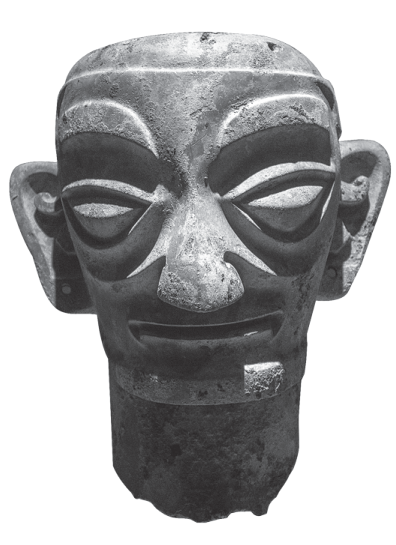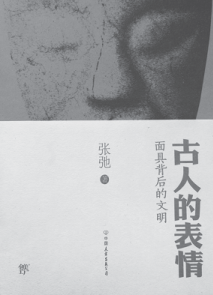Masks have helped people face fears before

"It is a book about face, a book without many words and about life and death," fiction writer Zhang Chi said when talking about his work, Ancient People's Expressions, which was published in March.
To be exact, it is a book about masks, not the masks we wear to prevent us from being infected with the novel coronavirus, but the masks made by ancient people to express their understanding about the universe, about heaven, and about everything they had difficulty with in their daily lives.
It is an amazing coincidence that this book about ancient masks was published at a time when face masks have seen such universal prominence and recognition as a health guard to protect people against the coronavirus.
Ancient masks, which were made largely of stones, jade, bones, pottery, shell or metal, were meant to meet and address people's psychological needs. Some were also made of wood or leather but the passage of time means that these have mostly decayed.
The writer himself has a collection of more than 100 ancient masks, most of which are made of stone or jade, and photos of them make up the major part of this book.
While these masks seem to have nothing to do, on the surface, with the face masks people are wearing today, fear and the need for protection is a common factor.
We wear face masks because we are afraid of contracting the novel coronavirus. We have a specific target to be afraid of. In this sense, our fear is well-grounded and reasonable.
People in ancient times, those in the later period of the Neolithic Age before China's Shang Dynasty (c. 16th century-11th century BC) in particular, made masks also because of fear. A lack of knowledge and understanding about nature and a lack of defense against natural disasters or even attacks from beasts resulted in an ever-lasting fear of the volatility of their lives. The masks made of stone or other materials served as a psychological protection against whatever potential disasters they faced. Such fear was not based on reason but on superstition and ignorance.
That most of the masks made of stone or jade were used as burial objects is evidence that ancient people strongly believed that there was another place for those who had left this world. Masks which were buried along with their bodies could be used to keep them safe from evils or any disasters there.
As burial objects, most of these masks look ugly, bizarre and even frightening. For example, animals were often engraved on stone masks. On the jade mask of Fuxi, a legendary figure said to be one of the earliest ancestors of the Chinese, there is a snake, an animal which ancient Chinese were afraid of but later worshipped.
Some of the masks were used as objects for sacrificial ceremonies, and on such occasions masks of bizarre animals such as taotie, which was considered one of the sons of the Dragon King in ancient myth, were believed to be able to communicate people's messages to the gods.
With increasing knowledge about nature and man's stronger capability to deal with natural disasters, the role masks played in ancient people's lives began to diminish. As a result, in the Han Dynasty (206 BC-AD 220), masks were almost entirely absent from people's life.
Zhang says in his book that it was not easy to understand what ancient people were trying to express, but "one needs to look into the eyes of these masks, there may be an instant when one has got a vague notion about the fear and worries of our ancient ancestors".
If anything, the more than 100 photos of masks in the book may provide readers with a glimpse into how people in ancient times looked at life and may possibly provoke thoughts about our lives today.


Today's Top News
- Disrupting market under fabricated veneer of 'national security' hurts US' own interest: China Daily editorial
- Yasukuni visit would add insult to injury: China Daily editorial
- Judicial reform critical for modernizing governance
- Effective use of investment emphasized
- China's shuttle diplomacy strives to reach ceasefire
- Nanjing Museum's handling of donated art, relics being probed






























